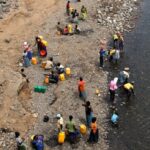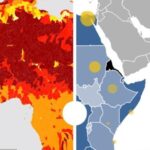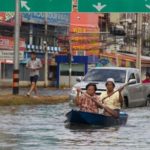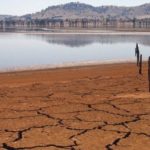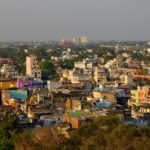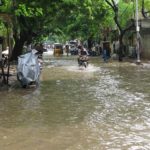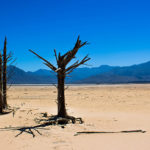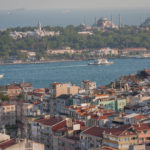Posts tagged with 'water risk'
New data from WRI’s Aqueduct Water Risk Atlas show that 25 countries — housing one-quarter of the global population — face extremely high water stress each year, regularly using up almost their entire available water supply. And at least 50% of the ...

South Africa’s cities are economic engines, drawing workers across the country and the continent. Of the country’s 58.8 million population, 68% live in urban areas. Between 2000 and 2014, urban area in South Africa expanded by 1,464 km2. Population projections ...

Africa’s population is growing faster than any other continent’s and its urban population is expected to more than double by 2050. This urban rapid growth, which is mostly sprawling “horizontal” growth, as the World Resources Report: Towards a More Equal City shows, is combining with climate ...

Water for human consumption is increasingly inaccessible, due to poor management, degradation of water sources, the effects of climate change and more. Marginalized groups — such as minorities, rural communities and women — are disproportionately affected by water security issues, and women often play a key ...

During Caroline Owala’s childhood, flooding during rainstorms was a normal occurrence. “When it rained, it would be very difficult for us to even sleep because the flooding would get into the houses,” she told WRI. Caroline grew up in Kibera, ...

Flooding has already caused more than $1 trillion in losses globally since 1980, and the situation is poised to worsen: New analysis from WRI’s Aqueduct Floods finds that the number of people affected by floods will double worldwide by 2030. According to data from ...

When Cape Town, South Africa, and Chennai, India nearly ran out of water, these two cities managed to avert Day Zero with solutions that were creative and effective but far from perfect. In Cape Town, there were mile-long queues of people waiting for hours for water. ...

Once-unthinkable water crises are becoming commonplace. Reservoirs in Chennai, India’s sixth-largest city, are nearly dry right now. Last year, residents of Cape Town, South Africa narrowly avoided their own “Day Zero” water shut-off. And the year before that, Rome rationed water to conserve scarce ...

One of South India’s biggest cities is almost out of water. A year after Cape Town, South Africa, had its own “Day Zero” crisis, the reservoirs in Chennai are nearly dry, leaving millions in this usually-wet coastal city wondering if they ...

Chennai faced a devastating flood in 2015 that killed hundreds of people and displaced many more. Today, the southern Indian city’s four main reservoirs are virtually dry. This crisis is not only due to lack of water. Lack of proper management is ...

In the 1990s, New York City needed a new water filtration system to serve its nearly 8 million people. But the prospect of spending $6-10 billion on a new water treatment plant, and another $100 million on annual operating costs, ...

Cape Town is running out of water. After three years of intense drought, South Africa’s second-largest city is just a few months away from “Day Zero,” the day when the city government will shut off water taps for most homes and businesses. The impacts ...

The Metropolitan Area of the Valley of Mexico, as Mexico City’s wider metropolitan area is locally known, faces a two-fold dilemma. In recent years, the intensity of rains has increased, straining drainage systems and causing severe flooding in low-lying areas. ...

This article was originally posted on the Pacific Standard. For the past five years, the World Economic Forum has listed water crises among the world’s top global risks, alongside others like “major systemic financial failure” and cyberattacks. Unfortunately, the ranking has proven ...












